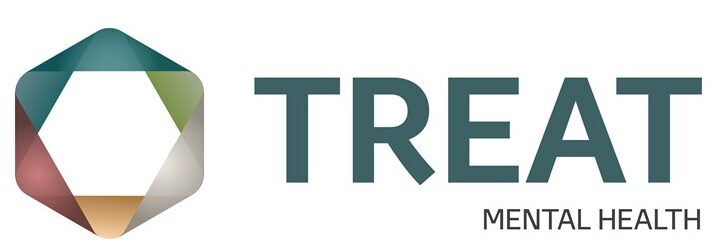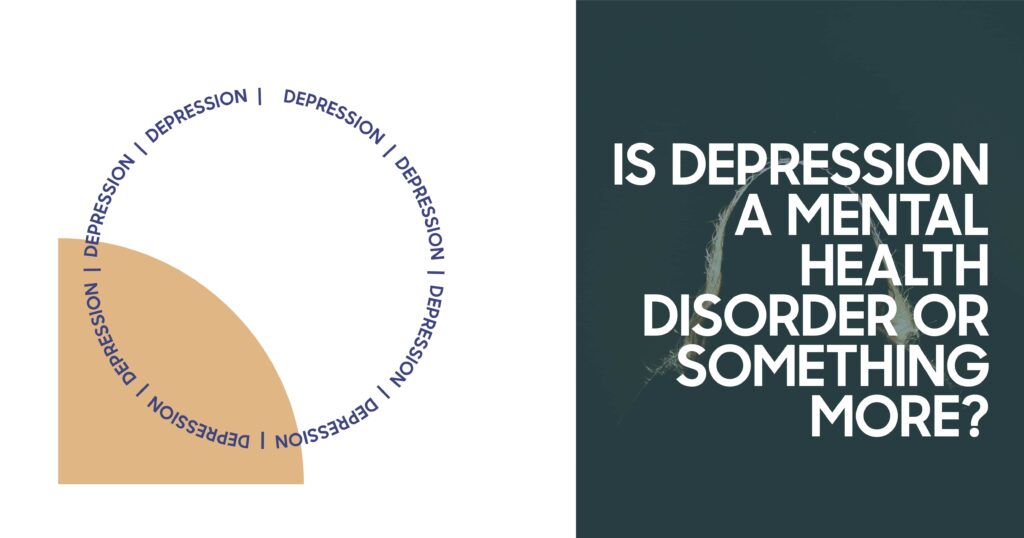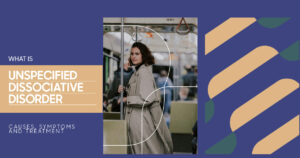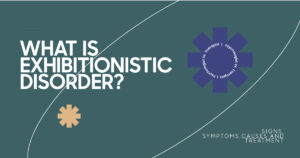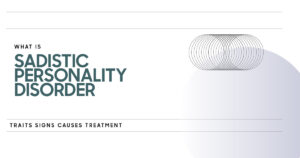Depression is one of the most commonly discussed mental health conditions today, but many people still wonder, is depression a mental health disorder or something more? The answer isn’t always simple. While depression is clinically recognized as a mental health disorder, specifically known as Major Depressive Disorder (MDD), it can also manifest in a variety of forms that go beyond the typical image of sadness or hopelessness.
Each person expresses depression symptoms differently through emotional blunting as well as physical exhaustion. Depression has multiple manifestations forms so it requires a thorough examination of the complete scope of this intricate problem.
This blog explores the signs of depression, together with supporting scientific evidence, and looks into whether it represents a mental health issue or a complete bodily transformation.
Is Depression a Mental Health Disorder?
Major Depressive Disorder functions as a mental health disorder that creates distinct emotional, cognitive, and behavioral symptoms that disrupt regular everyday operations for individuals. The condition goes beyond simple sadness because it develops into an extended, serious health issue needing proper care.
Another major question that so many people ask is: Are there different ways to be depressed? Several individuals experience depression as more than an official medical condition. The condition affects personal relationships and work output and harms self-perception while negatively impacting physical wellness. People need to identify depression at its onset and understand its authentic nature because this diagnosis plays a fundamental role in treatment.
Understanding the Clinical Definition of Depression
A depression clinical diagnosis indicates that patients suffering from depression experience both prolonged emotional distress along with the total elimination of standard interests. When asking, “What is depression?” it’s essential to understand that it’s more than just feeling down, it’s a serious mental health condition.
MDD presents clinical signs that include:
- Alterations in appetite or weight
- Sleep issues
- Fatigue
- Poor concentration ability
- Feelings of self-worthlessness
- Suicidal thoughts
People experiencing MDD present diverse symptoms at varying intensities, which differ among individuals. People who understand that depression presents differently can transition from criticizing to providing support because depression manifests in countless ways.
Depression Vs. Sadness: What’s the Difference?
Depression stands as a serious, prolonged mental illness rather than sadness, which serves as a normal response to life difficulties. Here’s how the two differ:
| Aspect | Sadness | Depression |
| Duration | Temporary, usually fades with time | Lasts for weeks, months, or longer |
| Cause | Often linked to a specific event (e.g., loss, disappointment) | May not have a clear cause or be triggered by multiple factors |
| Intensity | Manageable emotions | Intense and overwhelming emotional pain |
| Daily Functioning | Daily activities remain mostly unaffected | Disrupts sleep, work, relationships, and self-care |
| Mood Variability | Mood usually improves over time | Mood remains consistently low or worsens |
Understanding this difference is key. Lifelong sadness exists, but depression stands as a medical mental health condition that people should never overlook.
Types of Depression and How They Manifest
There is no universally applicable treatment for depression. The spectrum of mental health disorders within depression contains specific patterns of symptoms that match particular conditions and triggers. Identifying suitable care for depression requires identifying various depression symptom patterns. Major Depressive Disorder shows unique clinical symptoms based on depression type and patient-specific factors from their background.
Two main types of depression exist, with seasonal depression (SAD) affecting specific annual periods while depression emerges from hormone shifts or major life events.
| Seasonal Depression | Hormonal or Life Event-Related Depression |
| Occurs during specific seasons, typically fall or winter. | This condition arises from hormonal shifts or important changes in life experiences. |
| Symptoms include fatigue, low mood, and social withdrawal. | Fatigue, low mood, and social withdrawal serve as symptoms of this condition. |
| Symptoms typically reduce when the seasons change or light treatment is applied. | The condition presents as feelings of sadness along with emotional distress and a sense of hopelessness. |
Major Depressive Disorder and Other Variants
| Disorder | Description |
| Major Depressive Disorder | A diagnosis of depression needs two weeks of steady low spirits in combination with diminished interest, sleep disturbances, weight changes, and concentration difficulties. |
| Persistent Depressive Disorder (PDD) | The condition of dysthymia contains depression characteristics at a lower intensity when present for two years or longer. The symptoms remain milder than MDD but continue to affect daily life. |
| Bipolar Depression | Manic and depressive episodes mark one type of Bipolar Disorder that causes patients to experience mood swings between states of elevated mood and depression. Patients endure intense variations in their energy levels and behavioral patterns. |
| Postpartum Depression | New mothers often develop mood disturbances with fatigue while experiencing limited ability to bond with their newborn. Requires professional treatment for management. |
| Atypical Depression | People with this condition show mood swings while experiencing increased hunger and sleeping more than usual. |
Recognizing the Signs and Symptoms of Depression
Getting the correct professional assistance depends heavily on recognizing depression symptoms at an early stage. The following signs indicate depression, but their manifestation can differ among people:
| Restlessness or slowed movements and speech | Feelings of worthlessness, guilt, or self-blame |
| Sleep pattern disturbances | Changes in appetite |
| Feeling of tiredness even after rest | Difficulty in maintaining focus or making decisions |
What Causes Depression?
Depression exists as a complicated mental health disorder whose origins remain multiple and unknown. A multitude of elements affecting brain functions, physical aspects, and emotional states combine to produce this condition. The key to identifying risk factors and selecting proper treatments depends on understanding depression causes. The answer to the question about the cause of depression lies between brain chemistry and trauma but typically includes elements from both sources.
Depression develops after life events, through genetic susceptibility or medical conditions, and continuous stress. Depression exists among individuals of all backgrounds without any protective group. Understanding depression triggers enables people to obtain assistance at an early stage while reducing their sense of isolation during their battle with depression.
A Look at Biological, Environmental, and Emotional Triggers
Biological Factors:
Major depressive disorder symptoms are linked to chemical brain imbalances that disrupt serotonin and dopamine transmission. Individuals facing an increased depression risk do so because they share biological relations with those who have experienced depression.
Environmental Triggers:
Various life events lead to depression, such as employment loss and traumatic events. Workplace stress stemming from unwholesome work settings, together with challenging interpersonal connections, functions as depression.
Emotional and Psychological Influences:
Unresolved traumatic experiences, negative thought patterns, and low self-esteem all raise a person’s susceptibility to depression. Those who experience severe self-doubt alongside the practice of mental distress absorption face an increased risk for depression.
How Depression Affects Daily Life and Relationships
People who experience depression find that their feelings transform into substantial difficulties with their everyday activities. Daily activities that previously seemed manageable now become difficult to complete, including professional responsibilities or small tasks such as tooth brushing routines. The inability to focus results in low energy levels and diminished motivation, thus, people cannot hold onto their typical work duties and schoolwork alongside household obligations.
A depressed person generates substantial interpersonal distance within their love relationships. The condition leads affected individuals to separate themselves emotionally, which makes them appear uninvolved. A person’s detached pattern typically develops because of their feelings of worthlessness, self-doubt, and difficulties communicating emotions.
People who withdraw from social connections due to depression generally get the wrong impression, leading them to believe their loved one lacks commitment. Marital stress significantly rises because of emotional detachment caused by depression, which leads to misunderstandings between partners and increases both of their feelings of loneliness and frustration. Depression affects human relationships to an extreme extent through its psychological barriers, which disrupt all close bonds, such as love relationships and familial ties.
Treatment Options for Managing Depression
Managing depression typically involves a mix of therapies, medications, lifestyle adjustments, and social support.
Therapy
Talk therapy helps individuals understand their thoughts, emotions, and behaviors while developing healthier coping strategies.
| Type of Therapy | Description |
| CBT | Involves recognizing and altering harmful thought and behavior patterns. |
| DBT | Develops tolerance for distress, mindfulness, and emotional control. |
| Interpersonal Treatment | Helps improve communication and resolve interpersonal issues. |
| Psychodynamic Therapy | Explores unconscious patterns and past experiences influencing current feelings. |
| Group Therapy | Offers support and shared experiences among individuals facing similar challenges. |
Lifestyle Changes
Individuals who have mental disorders need to adopt healthy routines because these approaches increase the effects of their therapy and their prescribed medicine. Regular exercise, a balanced diet, quality sleep, and stress-reduction techniques all support recovery.
Support Systems
Emotional support becomes accessible through family involvement as well as peer support groups and online communities. Aftercare programs should keep patients engaged because they decrease the risk of returning to drug use.
Medication
Antidepressants help in the regulation of the brain’s functioning. A psychiatrist will provide a pharmaceutical recommendation based on the patient’s medical history and symptoms.
Ready to Take the Next Step? Treat Mental Health Can Help
If you have been facing depression and anxiety alone, it’s now time to get help. Treat Mental Health offers an experienced team of licensed professionals who guide you through the understanding and managing of your symptoms. Your healing journey is just around the corner. Contact us today, and let’s begin!
FAQs
Is depression a mental illness?
Yes, depression is classified as a mental health disorder that affects mood, thinking, and daily functioning.
What are the symptoms of depression?
People who experience depression show symptoms that include ongoing sadness, decreased interest in things they used to enjoy, fatigue, and variations in their sleep patterns or appetite.
How is depression different from sadness?
Sadness is a normal response to life events and typically fades over time, while depression is a prolonged, intense condition that interferes with daily life.
What are the causes of depression?
The following are the causes of depression:
- Environmental or emotional factors
- Life stressors
- Trauma
- Brain chemistry
What are the treatment options for depression?
The standard treatment methods for depression involve therapy sessions that use CBT and DBT, respectively, with medication that utilizes antidepressants. Lifestyle modifications and supportive networks play a significant role in recovering from depression.

